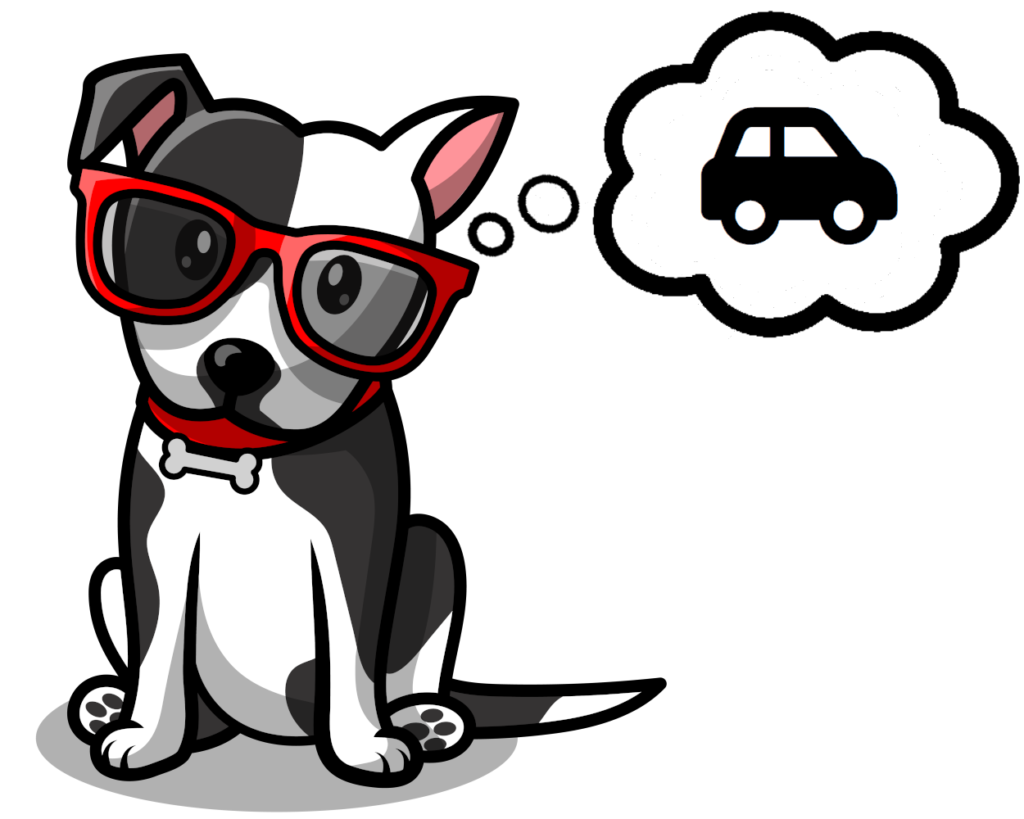Personal Auto Insurance 101
So, you’re looking for Automobile Insurance?
Ahh yes, the hated but necessary evil of owning a car. You got that right, it’s that mandatory auto insurance! The state makes you buy coverage, and if you have a loan or lease on the car, the bank will make you buy coverage too… All for that glory of transportation independence!
And that auto insurance, it sure gets pricey. I mean, sure, cars nowadays are pretty much high tech computers on wheels… Some of them even drive themselves! On top of that, some cars can cost more than a starter home, so it’s no wonder insurance prices keep going up and up.
So here you are, a happy human, who spent days searching for the perfect car that matches your personality, and you are finally ready to put that money down and take home your new ride. But, uh oh, the dealer asks for an auto insurance id card. Oh, and since you couldn’t pay for that car in cash, the bank is also requesting proof of that coverage.
With all these crazy insurance terms, where do I start?
How do I go about finding a great auto insurance policy?
All without breaking the bank?!
Will I really be protected if something happens?
Before we begin, are you already an expert on the basics?
We are excited to shower you with all the best tips and advice, but first, you need to have a basic understanding of insurance and coverages. If you believe you are already an auto insurance wiz, feel free to pass our coverage breakdown below and skip ahead to the good stuff…
Such as how to keep those sacred dollars in your pocket without leaving yourself unprotected! Face off against Izzy, testing your knowledge while allowing him to fetch your personalized breakdown of auto insurance tips & tricks. Izzy’s obsession with insurance allows him to measure your risk and help show you all the ways you can save money without sacrificing coverage.
Just answer a few questions to face off against Izzy, he loves insurance and can’t wait to fetch you some useful knowledge he buried. Woof!
Auto Insurance Coverage

A Little Note About Auto Insurance Coverages
Auto Insurance coverage doesn’t have to be tricky, sometimes just knowing what all that insurance jargon means could help you understand exactly what you are paying all this money for.

Knowledge Is Power
If you understand the coverages you will know if you are being tricked into expensive extra add-ons or even cutting coverage you truly need, just to save a couple bucks. Not only that, but you will understand enough to ask better questions to your agent, enhancing the service they can provide you.
Protection For Injuries And Other’s Property
This coverage covers for bodily injury you may do to someone else with your vehicle.
For Example: If you are in an accident and people in another automobile are injured it will help protect you from lawsuits.
This is one of the coverages that states will require. Generally, you will see coverages that are either split limits or combined single limits. (see the other insurance terms section below)
This covers for damage to other people’s property with your vehicle. This could be another vehicle, fence, building or any other form of property.
This is one of the most overlooked coverages and generally most people do not purchase enough coverage. The state may require a small amount of this coverage, but costs to fix vehicles are increasing.
For Example: You purchased the state minimum property damage coverage and get into an accident with a brand-new Mercedes. The damages may exceed the amount of coverage you carry. If sued, it will also cover your legal defense.
This covers your medical bills and lost wages or even childcare when you or even your passengers are injured in an accident.
Some states have minimum requirements for PIP Coverage. Although this may overlap with your health insurance plan or medical payments coverage, it’s still a valuable coverage to have.
Also known as “No Fault Insurance” this covers you or passengers, regardless of who was at fault. Whereas bodily injury coverage covers other drivers and other people outside of your vehicle, this coverage protects YOU and your passengers. Plus, if you are unable to perform essential services, you can tap into this coverage for those lost wages or childcare expenses.
This covers you for medical expenses related to injuries sustained in an auto accident for you or your passengers.
This is an optional coverage, but extends to give some extra coverage when necessary. Some states do not even offer PIP (no fault) coverage, so this fills the void in coverage for those states. Other states will offer this coverage on top of PIP (no fault) coverage.
Whereas PIP (no fault) coverage allows you to pay for lost wages or childcare in the event you are unable to perform, Medical Payments coverage is ONLY for medical bills and expenses.
This coverage is for you or passengers in your vehicle who are injured because of the negligence of an Uninsured or Underinsured driver. You may seek compensation for injuries and damages through this coverage, up to the limit on your policy.
For Example: You get into a bad car accident and you are seriously injured. Even though the other driver was at fault, you find out that he only has the state minimum coverage. Your medical bills pile up and exhaust the other driver’s coverage limits. If you have uninsured/ underinsured motorist coverage, your policy will pay out for the other driver not having sufficient coverage.
A good rule of thumb is to purchase Uninsured/ Underinsured Motorist Coverage for the same limits that you have in Bodily Injury Coverage. This way, whatever you are doing to protect other drivers, you are protecting yourself as well, in spite of drivers who cut corners to save an extra buck.
Protection For your Vehicle And Expenses
This coverage pays for damage to your vehicle due to an accident with another vehicle or property, providing a safety net in the event your vehicle is damaged and needs to be repaired or replaced.
Whereas property damage coverage covers other vehicles that you cause damage to, collision coverage protects YOUR vehicle and allows you to fix it up back to how it was prior to the accident.
This coverage is always required by banks for a loan or a lease on a vehicle. They will also have maximum deductibles you can take.
While other coverages on your policies are based on limits of coverage, generally this coverage is shown to you based on deductible. Deductibles are what your portion of the claim will be. You are responsible for the deductible, and then all the other damages over and above that amount will be paid by the company.
Comprehensive, or Other Than Collision coverage pays for damage to your vehicle that is caused by fire, theft, vandalism, flood, falling trees, natural disasters or hitting an animal. A common claim for comprehensive coverage is generally a broken windshield.
This coverage is always required by banks for a loan or a lease on a vehicle.
While other coverages on your policies are based on limits of coverage, generally this coverage is shown to you based on deductible. Deductibles are what your portion of the claim will be. You are responsible for the deductible, and then all the other damages over and above that amount will be paid by the company.
Sometimes companies will include glass coverage with a $0 deductible. Called Full Glass, check your policy details as some companies offer all windows covered with no deductible, others will only cover the windshield with no deductible.
This helps you cover the costs you incur for renting a car when your car is disabled or getting fixed due to an accident.
Most companies will not allow you to use this coverage for a breakdown: It must be the result of an accident or covered loss.
Generally, companies will set you up with a specific rental car service and provide you with everything you need, allowing you minimal or no out of pocket expense. Of course, you can select your own rental and ask for the company to reimburse you.
You will just need to be more knowledgeable of the actual limits you have and what you are allowed to rent. We always advise allowing the company to assist you, as it is a seamless, pleasant experience.
This covers you for costs you incur for having your vehicle towed from the scene of an accident.
Some companies will not allow you to use this coverage for a maintenance breakdown and will only allow you to use in the event of an accident.
Always check your policy as well as the limits to your towing coverage. Sometimes there is a distance associated of the max you can travel for the tow. Costs over the towing limit will be your out of pocket expenses.
Other Important Insurance Terms And Notes
Split Limits and Combined Single Limits refer to your coverage type on Bodily Injury or Property Damage Coverage.
Split Limits are just that, they are split and broken up into different limits for different situations. They usually follow the format A/B/C : “A” will be the max coverage on Bodily Injury Liability Per Person, “B” will be the max coverage on Bodily Injury Liability Per Accident, and “C” will be the max coverage on Property Damage.
Split Limits allow for you to choose how much coverage for each situation. Some companies will offer either split or combined limits, and others will offer both.
Combined Single Limit brings all the limits under one number. That number is the maximum amount the company will pay for all liability from one accident.
For Example: If you have 50,000/100,000/50,000 – that means you have $50,000 max bodily injury per person, which then caps at $100,000 max bodily injury per accident and $50,000 max for physical damage. If you have $300,000 Combined Single Limit, you have up to $300,000 max for the whole accident, whether it be for bodily injury or property damage.
So, using the example above…If you get into an accident and the other car has $75,000 worth of damage. The driver and two passengers in that car, EACH had $50,000 in bodily injuries. You would be at a total of $150,000 in bodily injury damages.
So, the split limits in the example above would max out at 100,000 for bodily injury per accident, and max out at 50,000 for property damage, paying a total of $150,000 for all damages. Yet, the combined single limit above does not max out until you get to $300,000, so it would pay a total of $225,000.
Deductibles are what your portion of the claim will be. They are generally attached to a coverage in auto insurance. Auto Deductibles are usually for Comprehensive and Collision coverage as well as full glass coverage at times.
Generally, the higher the deductible, the more you can save on premium, however, at the time of loss, you will be subject to that out of pocket expense.
So, Now That You Know The Basics…
How Can We Help You Further?
Reach Out To Our Expert Agents
Don’t want to explore the site? Sick of reading this insurance mumbo-jumbo? No worries, we are here to answer your questions. We’re open: Monday – Friday from 9am-5pm. Or Just Make An Appointment!
Keep On Learning…
Okay, so now you’re an expert on the basics of auto insurance. Time to face Izzy and test your knowledge!
Just answer a few questions from Izzy: He will fetch the best information for your specific needs and concerns. He also has plenty of tips and tricks on how to save that cash, ready to be dug up just for you.
Get An Auto Quote Instantly!
Our simple, yet powerful, SAI Quoting System is ready to take your detailed information, run it through a bunch of our companies and spit out some rates!
*We can only provide instant rates for the states in which we are licensed*

